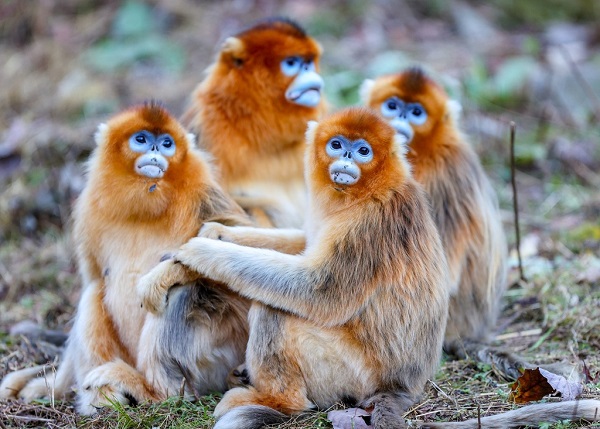De Brazza's Monkeys: Geographic Range, Habitat, Locomotion, & Ecology
Blog 2: De Brazza's Monkey Geographic Range, Habitat, Locomotion, & Ecology
Figure 1. De Brazza's monkey range, IUCN 2019
This figure (Figure 1.) from the International Union for Conservation of Nature (IUCN) shows where on the map of the worldworld map De Brazzas monkeys are found. As the map shows, the orange-shaded portions are where De Brazza’s monkey populations have been found.
1. Geographic Range:
De Brazza's monkeys are found stretching across a vast amount of land in Africa, Their specific populations are found in various places in Central Africa. Despite their expertise in hiding they have been found in Angola, Cameroon, the Central African Republic, the Democratic Republic of Congo, Congo, Equatorial Guinea, Ethiopia, Gabon, Kenya, South Sudan, and Uganda (New England Primate Conservancy, 2021).
Figure 2. 4 Layers of the Rainforest, ScienceFacts 2023
This figure (Figure 2.) gives a visual aid for imagining the environment of De Brazza’s monkey. As this diagram shows the Understory layer of the forest is where young trees, bushes, and herbs start their growth. This is the same place where our De Brazza’s monkeys are primarily spending their lifetime. Foraging and moving along the understory.
2. Habitat Use & Ranging:
De Brazza's monkeys are found all across Central Africa. Occupying dense forest regions, primarily near rivers or waterways. They are expert hiders. They are found in dense swampy forests, lowland tropical forests, and even in mountain forests up to elevations of 2,200 meters (New England Zoo, 2019). Due to the shy nature of these De Brazza's monkeys, they prefer to reside along dense forest vegetation, specifically around waterways and near rivers (New England Zoo, 2019). The density of their environment helps them from being undetected from prey and found by any other potential dangers like humans. Their ability to stay unseen is incredibly impressive as they are traveling along the understory of the forest floor, and in times in areas where others may.
3. Locomotion:
This species' primary mode of locomotion is a form of a four-movement known as quadrupedalism. Surprisingly this species of monkeys are also amazing swimmers (Gautier, 1978). Their small body, long limbs, and tails help to maneuver through the trees. Their tail is non-prehensile but still help to balance while moving along the tree branches and forest floors (“De Brazza’s Monkey”, Minnesota Zoo). Their strong legs allow them to move quickly on all fours, as well as fathers fruits and other foods in their hand while storing them in their cheek pouches. (New England Primate Conservation, 2021). Their observant, careful personalities work well with their quick and powerful movements when avoiding potential dangers.
4. Ecology:
De Brazza’s monkeys are diurnal omnivorous animals. Despite their diverse palates they have a preference for sweet fruit found in their environments. They also tend to prefer seeds, either from fruits or foraged from the ground. However, when these foods are not available they will fall back on regional bugs, plants, flowers, or small reptiles. Their sharp teeth, big incisors and rounded molars help to grind, and pierce their food. Foods such as ripe fruits, seeds, herbaceous plants, mushrooms, beetles, termites, small reptiles, and flowers are the primary diet for a De Brazza’s monkey. However, they are said to be frugivors 75% of the time. These wary creatures will typically stay close to their territory, only traveling about .3 miles outward of their territory when foraging (New England Primate Conservation, 2021).
Resources
“DeBrazza’s Monkey, Cercopithecus Neglectus | New England Primate Conservancy.” Neprimateconservancy.org, 17 Nov. 2021, neprimateconservancy.org/debrazzas-monkey/.
“De Brazza’s Monkey | Franklin Park Zoo.” Zoonewengland.org, New England Zoo, 2019, www.zoonewengland.org/franklin-park-zoo/our-animals/mammals/primates/de-brazzas-monkey/. Accessed 10 Mar. 2025.
“De Brazza’s Monkey.” Minnesota Zoo, mnzoo.org/blog/animals/de-brazzas-monkey/.
Gautier-Hion, A., & Gautier, J.-P. (1978). The De Brazza's monkey: An original strategy. Zeitschrift für Tierpsychologie, 46(1), 84–104. https://doi.org/10.1111/j.1439-0310.1978.tb01440.x



Comments
Post a Comment